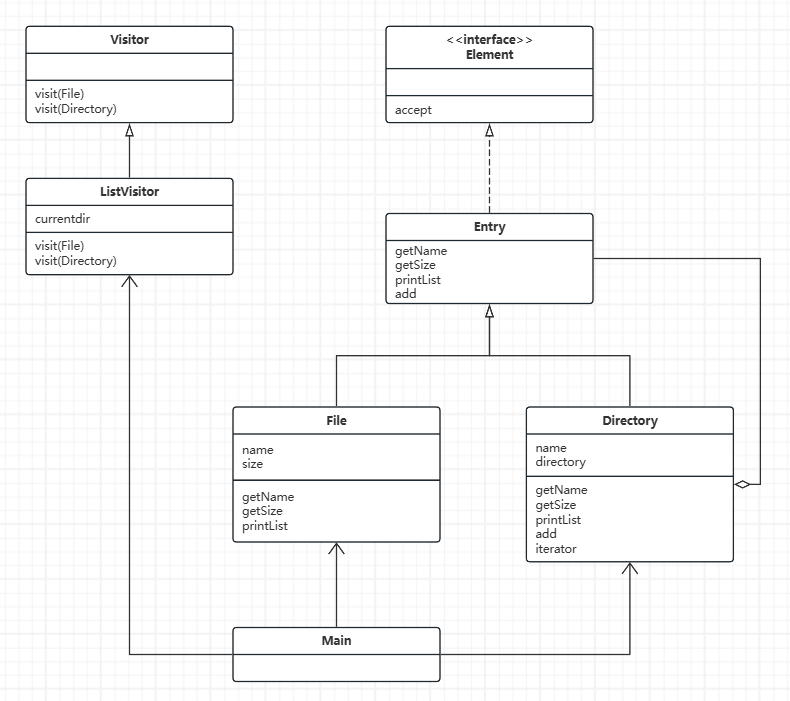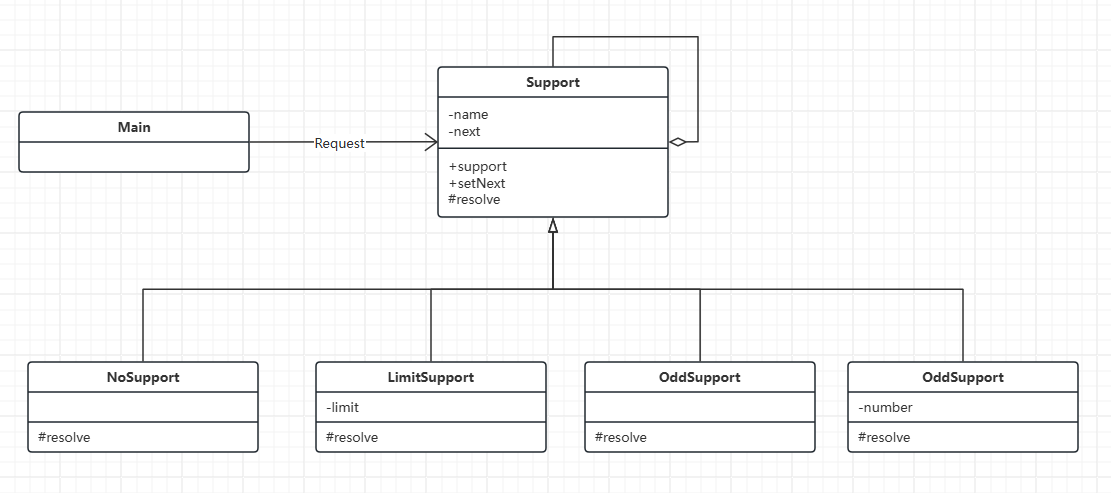《图解设计模式》 第六部分 访问数据结构
第十三章 Visotor 模式

public class file extends entry{
/* 省略 */
puhblic void accept(Visitor v){
v.visit(this);
}
}
public class Main{
public static void main(String args){
Directory rootdir = new Dirctory("root");
/* 省略 */
rootdir.accept(new ListVisitor());
}
}
双重分发
这里的 Element accept(Visitory) 和 Visitor的 visit(Element) 他们是相反的关系。前者接受,后者访问。
这种消息分发方式一般被称为 双重分发(double dispatch)
为什么弄这么复杂?
Vistor 模式的目的是将处理的数据从数据结构中分离出来。这里的 ListVisitor 是遍历,我们可能也要做其他事情,比如 文件批量改名之类。所有的行为在 Visitor 的子类中实现就好。
开闭原则(The Open-Closed Principle, OCP)
对扩展是开放的
对修改是关闭的
第14章 Chain of Responsibility 模式

public class Main{
public static void main(String[] args){
Support alice = new NoSupport("Alice");
Support bob = new LimitSupport("Bob", 100);
Support charlie = new SpecialSupport("Charlie", 429);
Support diana = new LimitSupport("Diana", 200);
Support elmo = new OddSupport("Elmo");
Support fred = new LimitSupport("Fred", 300);
//设置处理链
alice.setNext(bob).setNext(charlie).setNext(diana).setNext(elmo).setNext(fred);
for(int i = 0; i < 500; i += 33){
alice.support(new Trouble(i));
}
}
}
public abstract class Support{
private Stirntg name;
private Support next;
public Support(String name){
this.name = name;
}
public Support setNext(Support next){
this.next = next;
return next;
}
public final void support(Trouble trouble){
if(resolve(trouble)){
done(trouble);
}else if(next != null){
next.support(trouble);
}else{
fail(trouble);
}
}
protected abstract boolean resolve(Trouble trouble);
protected void done(Trouble trouble){
System.out.println(trouble + " is resolved by " + this + ".");
}
protected void fail(Trouble trouble){
System.out.println(trouble + " cannot be resolved.");
}
}
public class LimitSupport extends Support{
private int limit;
public LimitSupport(String name, int limit){
super(name);
this.limit = limit;
}
protected boolean resolve(Trouble trouble){
if(trouble.getNumber() < limit){
return true;
}else{
return false;
}
}
}
Windows 系统中经常使用这个模式。



 浙公网安备 33010602011771号
浙公网安备 33010602011771号